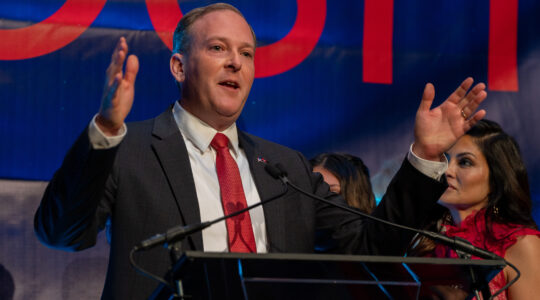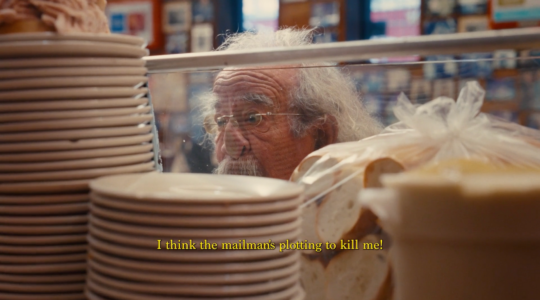For almost five months, Columbia University has been at the heart of the campus wars over just how the Middle East ought to be taught in universities where both students and professors are overtly political, in disagreement, and possessing more passion than the pristine objectivity to which academia aspires.
In October, The New York Sun broke the news about a documentary film, “Unbecoming Columbia,” that featured students and former students describing serial intimidation — verbal and academic — of pro-Zionist students, in and out of the classroom, by several Arab professors, mostly from the Middle East and Asian Languages and Culture (MEALAC) department. The anti-Israel mood is not limited to that department. More than 100 faculty members, reports New York magazine, have signed Israeli divestment petitions.
The documentary and subsequent controversy has been reported all over the Middle East, from Cairo’s Al Ahram to the Jerusalem Post to Beirut’s Daily Star, with quotes from the Sun’s frequent coverage. The Sun has printed stories almost weekly, and often on the front page, in contrast to The New York Times, which has run just two stories.The Times “public editor,” Daniel Okrent, did not respond to a request for an explanation of the Times’ editorial thinking. However, one veteran journalist who is familiar with the Times, told The Jewish Week that the Columbia story fits into the overall right-wing political bent of the Sun; it confirms beliefs that both Sun editors and readers already had, he said, so they can’t go wrong doing more of it. He pointed out that in the Times, the Columbia story is competing for space with basically everything happening around the world. Numerous other stories ought to be covered but often can’t be, he said. And so, he concluded, the Times’ decision was to try to do one long piece by N.R. Kleinfeld, Jan. 18, front of the Metro section, rather than a number of shorter ones. The 2,500-word piece, “Mideast Tensions Are Getting Personal On Campus At Columbia,” described the tensions between students and faculty, the pressure on Lee Bollinger, president of the university, and the debate over academic freedom.But although the veteran journalist dismissed the Sun as “right-wing,” the Times is just as easily labeled left-wing by some, and it knows how to “flood the zone,” as they say, when it wants to. In a three-month period, while the controversy at Columbia escalated, the Times published 98 stories touching on evangelical Christians, a group that the Times depicts, almost exclusively, as threatening to the nation’s schools and culture.Over at the Sun, managing editor Ira Stoll explained his editorial thinking to The Jewish Week. “Columbia is a major institution in New York,” said Stoll.
“We’re in the middle of a war with Islamic extremists and terrorists. The study of that region has great national and international importance. There are dramatic things going on [at Columbia], professors openly rooting for the enemy and praising violence. Columbia’s even getting funding from the United Arab Emirates, money that Harvard gave back. To us, it seems obvious that this is a big story.”If the story is being driven by the “right wing,” that hardly explains why the story has attracted critical attention from the Harvard Crimson to the Village Voice, papers hardly on the right. In the Voice, Nat Hentoff wrote, “Harassing students because they express pro-Israel views or are identifiably Israeli should be treated no differently than harassment of students because they’re black or because they’re gay.”Stoll speculates that the Times coverage, or lack of coverage, is the result of “an awkward situation between the Times and Columbia. Columbia gives out the Pulitzer Prizes. A lot of people at the Times went to Columbia or Barnard, and some of the things that people are objecting to at Columbia are not all that different from what the Times says in their staff editorials. Maybe they don’t understand what’s so outrageous about it.”On the other hand, critics of the Sun’s coverage see a pattern of uncritical reporting, one where claims by students in the film go largely unchallenged while the voices of students who see MEALAC as a fair department hardly get an airing. The Sun’s premise, critics say, seems to be that the environment at Columbia is anti-Semitic, and many of the stories follow from that premise, one that other publications don’t always share.Clearly, the Sun has been having an impact. On Feb. 15 it reported that Rashid Khalidi, holder of the Columbia’s Edward Said chair — funded by United Arab Emirates and named in memory of Columbia’s notoriously anti-Israel professor — was tapped by the New York City Board of Education to be one of several professors to give public school teachers an overview of the Middle East. The day after, the Board of Education dropped Khalidi. Khalidi, in turn, has a history of targeting the media. He publicly complained about the Chicago Sun-Times “inflammatory” coverage of the Ramallah lynching of two Israeli soldiers in 2000, when the lynch mob dipped their hands in the Israelis’ blood and then waved those bloody hands at the cameras. Khalidi dodged journalists who tried to press him on what exactly made the Sun-Times coverage inflammatory, but it is indicativeof the cultural divide that he could see those bloody hands and decide that it was the Sun-Times editors who were the inflammatory ones. A Jewish Week report on the controversy in October, before the documentary film was released, drew criticism from some Jewish student activists, and others, in part because it sought and published comments from Jewish MEALAC students who said they did not feel intimidated in classes. A letter from five of the Jewish student activists expressed disappointment with the article, noting that “even one case of abuse is one too many.”New York magazine published a major piece on the Columbia controversy last month (“Columbia’s Own Middle East War,” Jan. 17), raising questions, as did The Jewish Week, about the difficulties of defining the boundaries of free speech and intimidation.But while the debate continues about how one defines intimidation in the classroom, it is almost a given that the way the Mideast is taught at Columbia is decidedly pro-Arab and anti-Israel. As the Harvard Crimson noted, the Jews of Columbia, “unfortunately, it seems, may have been repeatedly victimized at the hands of particular members of the Columbia faculty.” While the whole story is still coming out, added the Crimson, “what is clear is that something is amiss in New York City.”
The New York Jewish Week brings you the stories behind the headlines, keeping you connected to Jewish life in New York. Help sustain the reporting you trust by donating today.




